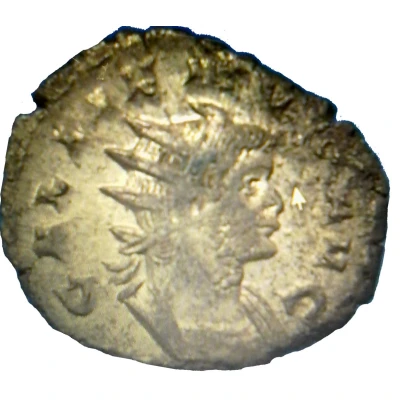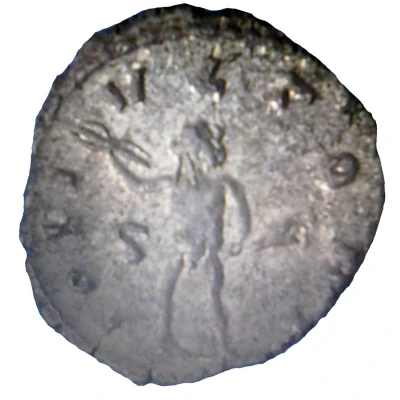Antoninianus - Gallienus P M TR P XVI COS VII
268 year| Silver | - | - |
| Issuer | Rome › Roman Empire (27 BC - 395 AD) |
|---|---|
| Emperor | Gallienus (Publius Licinius Egnatius Gallienus) (253-268) |
| Type | Standard circulation coin |
| Year | 268 |
| Value | Antoninianus (1) |
| Currency | Antoninianus, Reform of Caracalla (AD 215 – 301) |
| Composition | Silver |
| Shape | Round (irregular) |
| Technique | Hammered |
| Demonetized | Yes |
| Updated | 2024-10-05 |
| Numista | N#289265 |
|---|---|
| Rarity index | 100% |
Reverse
Gallienus, standing left, holding globe in right hand and sceptre in left hand.
Script: Latin
Lettering: P M TR P XVI COS VII
Translation:
Pontifex Maximus, Tribunicia Potestate Sexta Decima, Consul Septimum.
High priest, holder of tribunician power for the 16th time, consul for the seventh time.
Comment
Source:Online Coins of the Roman Empire (OCRE)
Interesting fact
The Antoninianus coin , which features Gallienus (P M TR P XVI COS VII) and was minted in Rome in 268 AD, is an example of a coin that was issued during a time of great turmoil in the Roman Empire. The empire was facing numerous challenges, including invasions by barbarian tribes, internal power struggles, and economic instability. Despite these challenges, the Roman Empire continued to produce coins like the Antoninianus, which were used as a symbol of the empire's power and influence. It's also worth noting that the Antoninianus was a significant improvement over earlier Roman coins, as it was made of silver and had a higher purity level than previous coins. This made it a more reliable and trustworthy form of currency, which was important for facilitating trade and commerce within the empire. Overall, the Antoninianus coin is an interesting example of how the Roman Empire continued to produce coins even during times of turmoil, and how these coins played an important role in the empire's economy and society.

